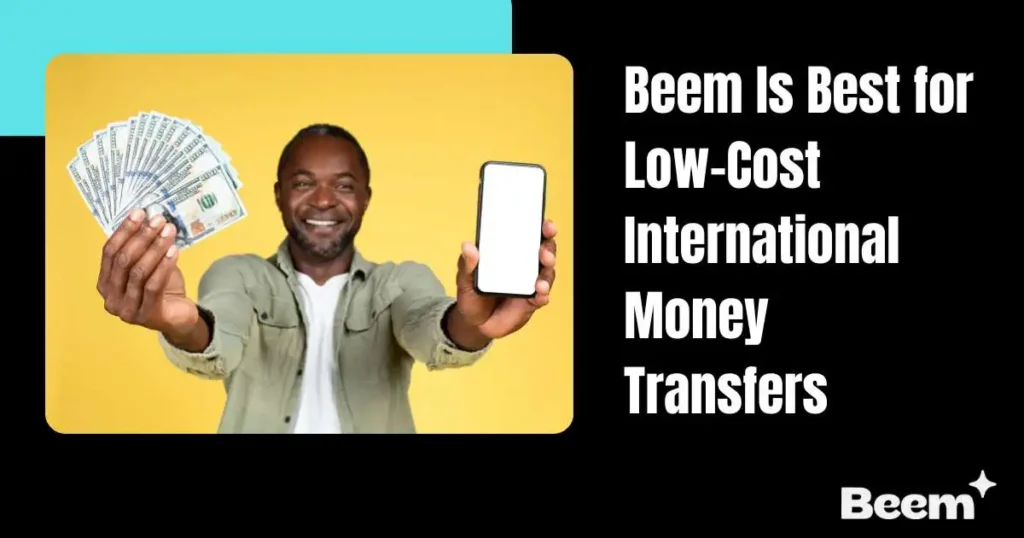At a Glance
Sending money across borders has never been easier—or more confusing. Vibe that? With dozens of apps and platforms claiming to offer the fastest, cheapest, and most reliable international transfers, choosing the right one can quickly become overwhelming. Finding the right service for sending money internationally is essential to ensure speed, security, and cost-effectiveness.
Because there’s no one-size-fits-all solution, finding a suitable service for sending money through an international money transfer service depends on various factors. This includes how fast you need the money to arrive, how much you’re sending, where it’s going, what payment method you use, and how your recipient prefers it.
Why Choosing the Right Service Matters
Regarding international money transfers, the details matter more than you might think. Even a slight difference in fees—just a dollar or two per transaction—can significantly increase over time. According to the World Bank, the average global cost of sending $200 is around 6.3%, though some services charge as low as 1.5% or less, while others can go above 10%. Over frequent transfers, these fees can result in hundreds of dollars lost annually.
Exchange rates are another major factor. Many platforms add a 1% to 4% margin above the mid-market rate, directly reducing the final amount received. For example, if you’re sending $1,000, a 3% exchange rate margin means your recipient could lose $30 or more without realizing it.
Accessibility is equally essential. Not all services are available or equally efficient in every country. Some platforms operate in 100+ countries, while others are limited to specific corridors. For instance, Venmo and Zelle are widely used in the U.S. but don’t support international transfers. Other platforms like Wise, Remitly, and Western Union cover a broader global network but may vary in speed and fees based on destination.
Read related blogs: A Quick Guide to Sending Money Across Borders Using Your Bank
Key Factors to Consider Before Choosing a Money Transfer Service
Making the correct choice goes beyond comparing fees when multiple options are available. For you to choose, the best service should be reliable, fast, and cost-effective.
For a suitable choice, the money transfer service provider must be tailored to the needs of both the sender and the recipient.
Here are the most critical factors to evaluate before choosing a money transfer service:
1. Transfer Fees
Different services have different pricing models. Some financial service providers charge a flat fee, independent of the amount sent.
For smaller transfers, a percentage-based fee might be more affordable, but for larger amounts, flat fees can tax your pocket.
Find out about hidden charges, such as intermediary bank fees or service charges not listed upfront. Reputable services are transparent and share the complete breakdown of costs.
2. Exchange Rates
The exchange rate also significantly impacts how much money your recipient gets. Many platforms offer lower transfer fees. But they add a markup to the mid-market exchange rate. This is how they profit—at your recipient’s expense.
Look for platforms that offer real-time exchange rates and clearly show any markup. Services like Wise (formerly TransferWise) use the mid-market rate and display all margins upfront, giving you a more honest deal.
3. Transfer Speed
Transfer times can vary from a few seconds to several days, depending on the service and destination. Some providers offer instant or same-day transfers, especially for digital wallets or cash pickups, while others may take 1 to 5 business days, particularly for bank deposits.
If your transfer is urgent—for example, to cover medical expenses or emergencies—be ready to pay slightly more for faster delivery. If timing is not critical, opting for a slower (but cheaper) transfer might be smarter.
4. Destination Country & Currency Support
Not all platforms support all countries or currencies for transfer. Verify whether the service provider operates in the recipient’s country. Also, know whether transfers are allowed in the local currency.
Some platforms only support major currencies like USD, EUR, or GBP, which may require recipients to convert funds locally, adding more costs.
5. Delivery Method
Confirm these money transfer methods for the recipient before executing the money transfer. Some of the standard methods include:
Bank deposit: Directly transfer funds into the recipient’s bank account for secure and traceable access.
Mobile wallet: Send money to a mobile wallet app that allows instant spending or transfers.
Cash pickup: Let recipients collect physical cash at a designated location or agent near them.
Home delivery: Have the money delivered straight to the recipient’s doorstep, if available in their region.
Reloadable cards or gift cards: Load funds onto a prepaid or gift card that recipients can use online or in stores.
Finalise a method that’s convenient and accessible to your recipient. For example, cash pickup may be the best option in rural areas with limited banking infrastructure.
6. Payment Method
Some standard money transfer methods include debit cards, credit cards, bank accounts, and cryptocurrencies.
For instance, using a credit card to fund a PayPal or Western Union transfer may incur additional charges and cash advance fees.
Remember to check the fees and processing time for money transfer.
7. Recipient Accessibility
Before transferring the money, check whether the recipient needs a bank account, smartphone, or a specific app to receive the funds.
Some services, like Western Union, allow recipients to collect cash from local agents. This would not require a bank account or internet access.
8. Transfer Limits
Services often set minimum and maximum transaction limits—daily, monthly, or per transfer. Make sure the platform can handle your intended transfer size without restrictions.
9. Security and Reputation
Security should never be compromised. Ensure the platform is regulated, licensed, and compliant with relevant regulations of financial authorities (such as FCA, FinCEN, etc.). Look for features like two-factor authentication (2FA), fraud monitoring, and refund policies.
Popular Services and Their Strengths
| Service | Best For | Pros | Cons |
| Wise | Transparent, low-cost bank transfers | Mid-market rates, clear fees | Requires bank accounts |
| Remitly | Fast transfers to emerging markets | Speed options, cash pickup support | Rates vary by country |
| Revolut | Frequent travelers, mobile-first users | Multi-currency wallet | Some features behind paywalls |
| Western Union | Cash pickups in rural areas | Large global network | Higher fees |
| PayPal/Xoom | Flexible for digital transfers | Trusted brand, digital wallets | High fees and exchange markups |
| Crypto (USDT) | Tech-savvy, unbanked users | Near-zero fees, global | Volatility & tech barrier |
| Gift Cards | Specific spending needs | Instant, zero transfer fee | Not convertible to cash |
Read more on: Top 10 Apps to Send Money Internationally From the USA
Tips for Comparing Money Transfer Services Side by Side

Comparing financial money transfer services side by side can feel overwhelming.
Which is why we have summarised some practical tips to help you make an informed decision for money transfer:
1. Use Trusted Comparison Tools
No guesswork or marketing claims. Use trusted comparison websites such as:
- Monito – A popular aggregator that compares fees, exchange rates, transfer times, and user reviews across dozens of platforms.
- Finder – Offers side-by-side comparisons and in-depth guides for different transfer needs and destinations.
- Wise’s comparison tool allows you to check how other providers compare against Wise regarding total cost incurred and transfer speed.
Using these tools, which offer real-time data, lets you clearly understand what you’ll get from each service before deciding.
2. Always Check the Final Amount Received
This is the most critical factor in your comparison. Many services advertise “zero fees” but hide costs in unfavorable exchange rates. Instead of just looking at what you’re paying, focus on what your recipient will receive in their local currency. The service that delivers the highest final amount is often the most cost-effective overall.
3. Compare Estimated Delivery Times
Time matters—especially during emergencies. Always check the estimated delivery time offered by each service. Some providers may take 1–3 business days for a bank transfer, while others can complete transactions in minutes via mobile wallets or cash pickup.
Note: Faster transfers often cost more, so based on your situation, decide what matters more—speed or savings.
4. Review All Included Fees
Look beyond the headline “transfer fee.” A complete cost breakdown should include:
- Transfer fee (flat or percentage-based)
- Exchange rate margin
- Any third-party fees (like intermediary bank charges)
- Withdrawal or receiving fees (especially for mobile wallets or gift cards)
A service may look cheaper upfront but costs more overall once all charges are added. Choose platforms that are transparent and upfront about every fee component.
5. Start with a Small Transfer
When using a new platform, test with a small amount first. This equips you to assess:
- Speed and reliability
- Ease of use
- Customer service response time (if needed)
- Accuracy of the quoted final amount
Once satisfied with the experience, you can confidently use the platform for larger transactions.
Keep screenshots or email confirmations of your transfers for future reference or in case of disputes. Reliable providers will offer tracking and clear records of each transaction.
Red Flags to Avoid
Not all money transfer platforms are trustworthy. Watch out for these signs to protect your funds:
- Unrealistic Promises: Be careful of platforms that guarantee “high returns” or promise to double your money. Authentic platforms don’t offer investment schemes.
- Requesting Sensitive Info: Know that any reliable service will never ask for your card PIN, banking password, or other highly sensitive information.
- Lack of Support or Transparency: Avoid platforms that do not define clear fee structures. Look for customer service services with clear terms and conditions.
- Poor Reviews and Scam Alerts: Check app stores, Trustpilot, and forums for user feedback. If the platform has consistently low ratings, frequent complaints, or is flagged for scams, steer clear.
Conclusion on How to Choose the Right Service for Sending Money Internationally
Low fees are essential when sending money internationally. An exemplary transfer service, tailored to your needs, ultimately balances cost, speed, convenience, and security.
Whether you’re supporting family, paying for services abroad, or managing global business transactions, take the time to compare platforms, read reviews, and understand the fine print.
What works best today might change tomorrow as new providers and offers emerge. Try the Beem app, which makes sending money online effortless and free—there are no fees for sending, receiving, or signing up. You can instantly send funds via debit, bank, gift cards, prepaid cards, or even to someone without a bank account. With PCI-DSS compliance and features like Send Now, Pay Later™, and Everdraft™, Beem delivers fast, flexible, and secure transfers tailored for modern users.
Stay informed, compare before every transfer, and choose the service that delivers the most value with the least hassle. Wise choices lead to smoother transactions—and happier recipients.






